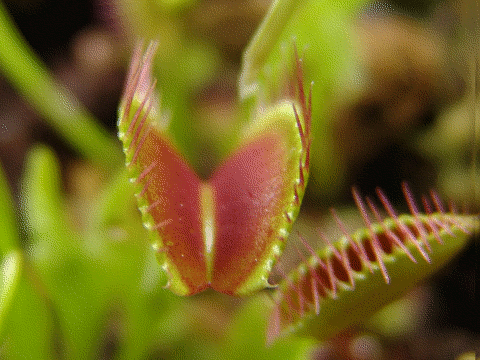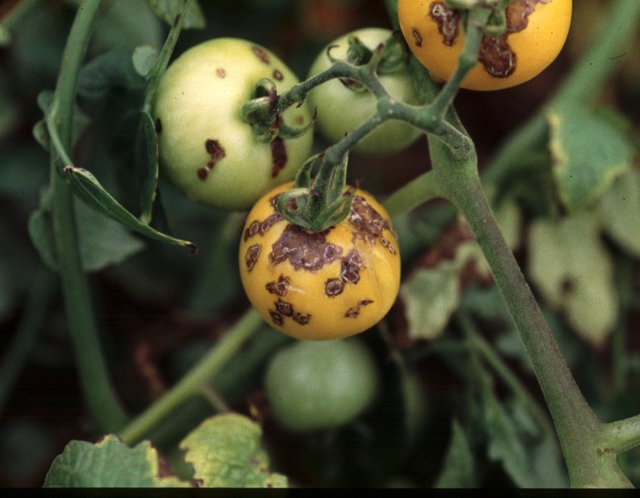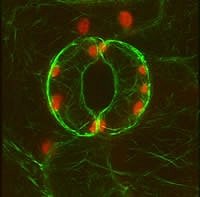Plants Proactively Protect Themselves from Parasites.
Plants may appear passive to the naked eye, but they’re quite proactive at molecular and microscopic scales

Except for rare species such as this Venus Flytrap, most plants don’t seem to be very active at scales that we humans can easily detect.
Bacteria, fungi, insects and other parasites pose formidable challenges to the successful growth and reproduction of many plants.
Therefore, it’s not surprising that plants have evolved a variety of defense mechanisms. New research findings just recently published in the Proceedings of the National Academy of Sciences of the USA clarify some of the molecular mechanisms that plants use to protect themselves specifically from the bacterium Pseudomonas syringae. The same and similar mechanisms likely are used against many other bacterial strains.

A tomato leaf spotted by the bacterium Pseudomonas syringae.
Pseudomonas syringae
Different strains (variants) of this bacterium infect a variety of plants, from lilacs to tomatoes. The bacteria excrete proteins that degrade the plants’ cell walls so as to feed off the nutrients inside the plants.
Important consequences for food production

These tomatoes were damaged by a bacterial infection.
Canker
Canker is a general term for damage to many plant species from fungal and bacterial infections.

Canker is a deadly and incurable disease for butternut trees.
Early detection allows plants to shut out dangerous bacteria
Many infectious bacteria try to get into the plant through the stomata, the tiny pores in leaves that allow the plants to exchange water vapor and carbon dioxide with the air. For example, the Guard Cell Group at the University of Bristol specializes in studying plants’ defensive mechanisms down to the molecular level.

An extreme close-up image of a stoma (single pore) from the Guard Cell Group.
This press release, Plants take it all in to deal with bacteria, describes the new results from Professor Silke Robatzek and colleagues at the Sainsbury Laboratory in Norwich. Briefly, they clarified how sensor molecules, which detect the presence of proteins from the bacteria on the surface of the plant cells, are then rapidly moved inside where they trigger defensive responses. One such response is simply to shut the stomata to prevent the bacteria or their toxins from getting inside.
Plants may not be able to run away, but they do have several chemical weapons at their disposal, and can also ‘batten down the hatches’ by closing their stomata – the leaf pores that usually open to allow gas exchange, but which can be infiltrated by harmful bacteria. The scientists observed that stomata closed only when the receptor internalisation mechanism was functional, strongly suggesting that it is key to providing a level of immunity even before bacteria enter the plant.
In this confocal microscopy image of Arabidopsis leaf surface infected with Pseudomonas syringae pv tomato DC3000 bacteria, the bacteria cluster at the openings of stomata (pores) on the leaves. The bacteria, fluorescing green, go to the stomatal pores in order to invade the leaf. The chloroplasts, where chlorophyll is packaged to harvest light, are shown in purple. This image is credited to Michael Kopischke, The Sainsbury Laboratory.
S. Lan Smith
Kamakura, Japan
September 21, 2016
Thanks to everyone who produced and made freely available the images used in this post.